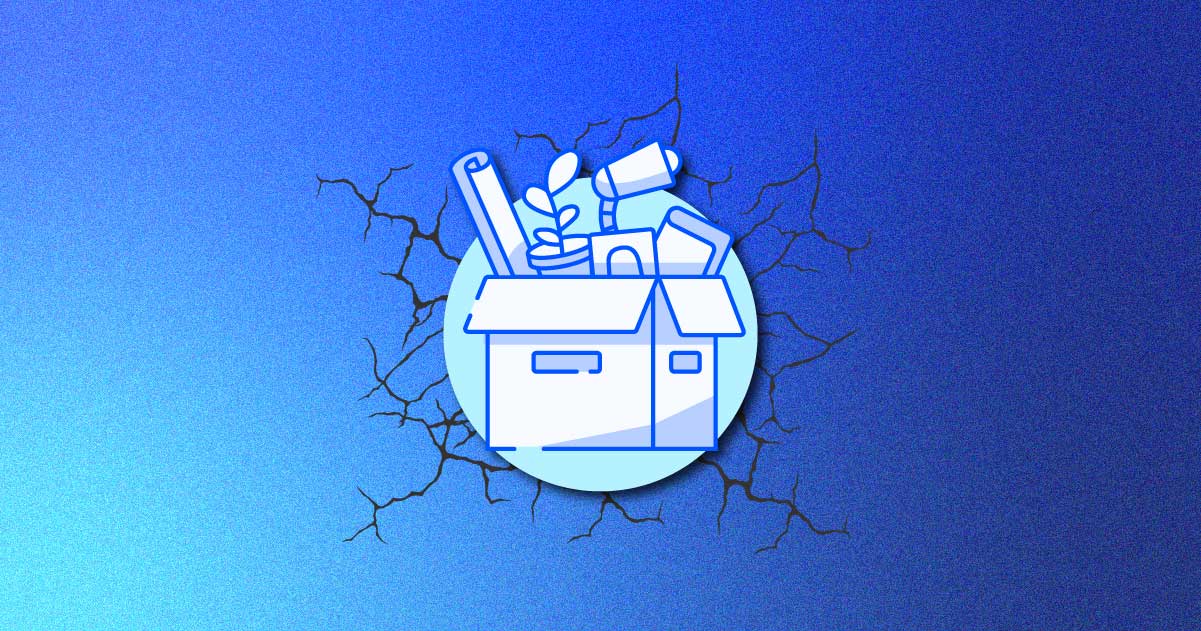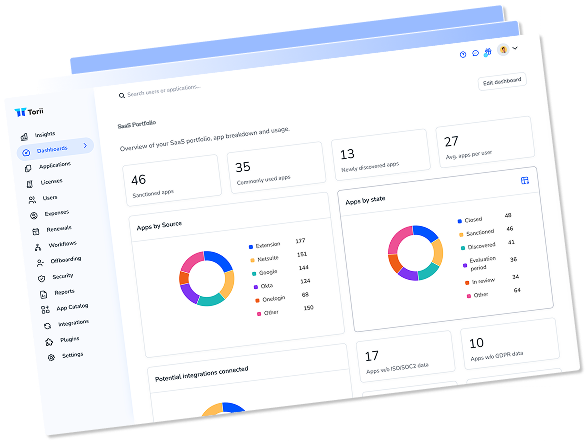When Salesforce took off as the first SaaS cloud application to hit the mainstream, it opened up a new world of possibilities for businesses. Suddenly, software no longer had to be installed or managed on-premise. Even so, many businesses resisted a new cloud-centric reality, trying to keep one foot in the old, safe world of IT Management.
Then, bam! The pandemic shook the world, and IT leaders were forced to confront the uncomfortable dissonance of their plan versus reality. Employees, like technology, went from on-premises to remote in the blink of an eye. Organizations charting their path to a cloud-dominant strategy shifted to hyperdrive, pushing the boundaries of how workers interact with their company, technology, and IT departments.
The unprecedented challenges posed by remote work demanded immediate pivots and innovation, so technology project timelines accelerated, SaaS tool adoption increased, and IT budgets got bigger.
Today, 47% of companies are pursuing a “cloud-first strategy,” in addition to the 30% that are already cloud-native. Supported by cloud applications, most people working remotely or in a hybrid setting have adjusted and even prefer it, but in a sense, this new normal broke traditional IT Management.
Rather than a centralized approval process, today’s decentralized application adoption and ownership comes with a host of problems that traditional IT Management is not capable of addressing at scale: Confronting where, how, and with what tools we work created fractures in the form of:
- Rampant siloed data within decentralized apps
- Bloated SaaS spend
- Surprise contract renewals
- Little to no visibility of Shadow IT
- Security and compliance issues
- Cloud accessible apps that ex-employees can still access
None of these problems are new, but their prevalence has exploded since the pandemic and remote work rocked the boat. The impact of light speed changes and broken processes has left many IT teams with whiplash. Now, it’s time to adjust course, brace your organization, and realign your IT Management strategy to how your organization works.
The Way Forward: 4 Ways to Refocus IT Management Around the New Normal
No single tool, tactic, checklist, or ebook will fix broken IT Management. The way forward requires fully re-examining IT Management functions to build a stronger framework for the new cloud-based reality.
1. Shift to a Cloud-First Mentality
Some aspects of pre-pandemic normalcy have been restored. Still, hybrid and remote work—which 57% of workers never experienced before the pandemic—continues to drive momentum toward a cloud-first business world. And in this new normal, Shadow IT will continually crop up as departments increasingly manage their own SaaS applications.
For IT to maintain visibility and protect against cyber security threats, they need more than legacy tools. To adjust strategies and get ahead in the cloud, IT teams need cloud-first tools that provide accurate application usage and cost data and a full view of their SaaS stacks–even those procured by Shadow IT.
For example, SaaS management platforms (SMPs) are designed specifically for the decentralized, cloud-first world. As a result, they discover and map all the applications within a company’s ecosystem and give IT leaders the insights they need to improve optimization and protect their sensitive data.
2. Get Stakeholders Involved to Improve Optimization
Recently, 21% of CIOs reported that IT would channel investments toward enhancing hybrid work. But, amid the recent shifts in the macroeconomic landscape, the pressure to manage costs and SaaS spend bloat is on.
Finance, Procurement, and IT teams need to work together on this, as each department can contribute to the health and optimization of the organization. For instance, if departments outside IT funded application purchases, your Finance team most likely has the receipts. On the other hand, IT may have more insight regarding license usage and redundant applications in SaaS stacks. Together, those insights could be the difference in cutting costs.
Even with an SMP’s discovery capabilities and Finance’s data, IT teams still need other stakeholders to undergo application rationalization and reveal additional ways to save. It’s all about getting siloed information out in the open, so you can take action, manage vendor relationships, remove redundancies, and draw more value from applications.
3. Maintain Continuous Communication For Continuous Engagement
Remote workers exposing company data is a top SaaS security concern for 56% of IT executives. To protect data, IT teams must go beyond systems and processes and educate the organization.
In general, it’s wise to keep everyone in the loop regarding IT Management, especially when security and governance are concerned. Whether through the occasional Slack message or in a recurring company newsletter, let app users know what changes are being made, why, and how it impacts them.
When employees are educated and given visibility into strategic IT decisions, they’ll be more engaged with IT teams and likely to seek assistance when needed.
4. Give IT Support Staff More Support
As IT teams to build new infrastructure and workflows to support remote and hybrid work, beware of burnout—74% of CIOs say remote and hybrid work have increased the stress on IT support staff and services.
Thanks to the distributed reality of the workforce, there’s a strong push for self-service when possible so issues are resolved faster and IT support teams aren’t plagued by a never-ending queue of requests.
With a centralized hub of SaaS data and insights, leaders and departments like procurement, Finance, InfoSec, and others can pull data and make informed decisions without having to go through IT. Of course, the IT team can get involved to provide clarifications or their own two cents, but empowering others to do the upfront work first is a win-win for all.
Lightening the load on IT doesn’t require shifting responsibilities, though. Imagine a world where IT doesn’t have to lift a finger to onboard a new hire so that employee can start being productive right away; where offboarding a former employee so they can’t access company apps and data is triggered the moment they leave; where a complete spend picture–including savings opportunities–is a click away; where manual processes are a thing of the past. It’s not too good to be true. Automations and customizable workflows baked into SMPs on the market make that possible.
Remote work stretched IT thin, but in this cloud-first world, there’s an opportunity for a revitalized IT Management strategy to emerge and transform the modern organization. If you’d like to learn more about how a SaaS Management Platform can help, check out this article where we unpack the lessons from Gartner® Market Guide for SaaS Management Platforms.

